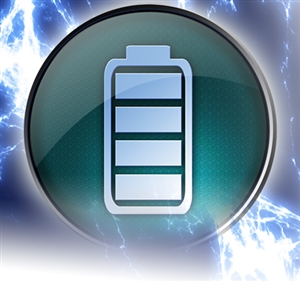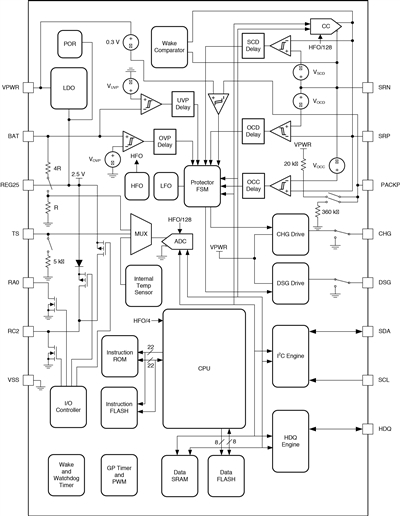Once you realize that you need to at least give your user some basic indication of your Li-Ion battery’s state-of-charge, you might also realize other features and benefits that a fuel gauge can offer. Let’s get all marketing-y:
- Increased run time! Don’t sandbag and set the so-called “empty” voltage too high in order to prevent sudden shutdowns when it’s cold or the battery gets old. Trust your gauge to converge to 0 percent when the battery is really empty.
- How long will this run? We call it “run time to empty” or sometimes “TTE.”
- How does this battery compare to a new one? We call it “state of health.”
- Free instrumentation! Think of it as a highly accurate voltage, current and temperature sensor approaching 1mV, 1mA and 1°C accuracy.
- Free memory! The electrically erasable programmable read-only memory (EEPROM) and flash-based gauges have nonvolatile memory that you can use as a scratch pad to store serial numbers, lot information or secret messages for your field operatives.
- Stop counterfeits! A fuel gauge placed inside the battery pack can include secure authentication to prevent end users from using poor-quality or counterfeit batteries.
You might have heard the refrain many times in this column that power management in general is an afterthought for system designers. They spend the bulk of their focus on the main function of the system, but may have little experience or time to consider how it will be powered (and re-powered). Maybe they don’t have the luxury of a dedicated power engineer, or even an analog engineer. When they realize that they need to find a way to supply VCC to their system, they know they need some power converters. They also know that if there is a battery, they need a charger integrated circuit (IC) to recharge it. But the ability to gauge that battery may be so far from their deadline-focused thoughts that they either forget or don’t think there’s enough time to add one. But if you really think about it, battery gauging is a necessity.
So what is a poor system designer to do if their deadline is looming? Fortunately, TI makes the easiest-to-use gauges around that are ready to drop into a system with little to no configuration. For a taste of the simplest system-on-chip (SoC) indicator, take a look at the bq27621-G1 Quick Start Guide. For some applications, it can even be used with zero configuration right out of the box.
Once you realize how easy TI gauges are to use and the value they can add to the user experience, you might want more features and configurability. Look at the bq27421-G1/bq27411-G1, or eventually the bq27510-G3/bq27520-G4. Another easy option is to ask your battery-pack maker to take care of the gauging and include a bq27742-G1 inside the battery pack for even more features. The pack-maker can configure a “smart” battery while you focus on system development. If your battery has more than one cell in series to achieve a higher voltage, it's likely that a gauge will be included in the pack, along with protection and cell-balancing functions, just like your laptop.
If you’re interested in learning some basics about how to gauge your battery, or why your favorite product might always be wrong about battery capacity, check out the videos in the Fuel Gauging section of Battery Management University.
Additional resources:
- Check out the other blogs in this of Fully Charged three-part series: Where’s the Gauge? Part 1 and Where’s the Gauge? Part 2.
- For more about fuel gauging, watch this blog video: Battery Management University: Fuel Gauging 101.



